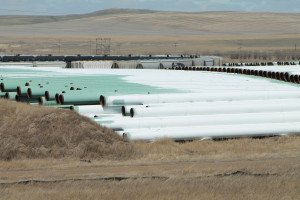The case for PVC pipes in Cleveland

By Jason Stverak
According to a recent Mayors Water Council report, the pipes that bring water to our houses in many cities are failing. The millions of miles of water infrastructure laid out over the last century are reaching their age limit. Water mains are breaking with increasing frequency in cities across the country.
PVC PIPES: With water pipes failing in Cleveland, PVC pipes are the most affordable and viable material to use for public water infrastructure.
This collapse in infrastructure has major implications for utility costs, as underground pipes represent 60 percent of the total costs of water and sewer projects. As old water lines continue to reach the end of their usefulness over the next several decades, the budgets of state and local governments are in for a shock.
Estimates of new water and sewer costs to replace and expand existing infrastructure over the next 20 years reach into the trillions of dollars.
Several ideas have been suggested, including opening up bidding on projects to make them more competitive and ensure greater efficiency. In Ohio, proposals like House Bill 417 would create provisions to make sure that “all proven and acceptable piping materials are included in bids for water and wastewater utility services.”
Regulatory hiccups, however, keep funds from going as far as they could. Under current regulations for money provided by the Environmental Protection Agency’s State Revolving Funds, which go toward providing clean water, many newer materials are not considered in the bidding process for new projects — including PVC (polyvinyl chloride).
Many state and city municipalities make it difficult for PVC to compete in water main replacement programs. For example, in his sponsor testimony for Ohio’s House Bill 417, State Rep. Andy Thompson noted that there is an ordinance in Cleveland dating back to 1937 that specifies which materials can be used in constructing a service pipe. By and large these materials are limited to lead, copper, brass, wrought iron, or steel. Under the ordinance, other materials can be used only with special written permission.
The general consensus on pipes made out of PVC is that they are both affordable and a perfectly viable material to use for our public water infrastructure. A recent study from Utah State University’s Buried Structures Laboratory, for example, concluded that PVC pipes had the lowest main breaks out of all the materials included in the study. It also found that PVC meets the 100-plus-year benchmark as an industry standard, making it an exceptionally sustainable material for piping. PVC pipes unearthed after nearly 50 years of service consistently pass standards testing from both then and now, and there’s no reason to think they will need replacing anytime soon.
To get a sense of how much utility costs could be altered, Steve Cooper of the PVC Pipe Association notes that 60 percent of capital investment in utilities is in transmission and distribution.
In layman’s terms, that means that more than half of the costs of new water and sewage infrastructure is tied to piping. Earlier this year, a study in North Carolina estimating the costs of repairing infrastructure found that using PVC would be anywhere from 23 to 50 percent cheaper than iron ductile pipe.







